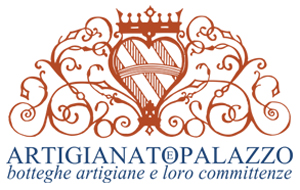Like the previous editions of ARTIGIANATO E PALAZZO artisan workshops and their commissions, the forthcoming 18th edition of the Exhibition brought together, in the splendid Giardino Corsini in Florence, over one hundred of the most extraordinary and capable Florentine, Italian and European artisans, involving some 8,000 attentive and curious visitors over the three days of the exhibition alone. In addition to the important cultural and informative contribution in itself, the Exhibition stimulated a moment of in-depth study on the ‘minor arts’, with the intention of bringing them ever closer to our daily lives, thus breaking away from the traditional canons of other Exhibition-Markets.
The ARTISANATO E PALAZZO exhibition was mainly born from the idea of re-evaluating and reframing the figure of the craftsman and his work in our times, considering it a high expression of quality and technique, linked to the client, but insisting on the idea of a craftsmanship that is ‘modern’ by nature, without forgetting the fundamental element of tradition. There was also a desire to emphasise the strong social relevance of the craftsman of the past whose workshop often thrived around the palace, understood as a ‘showcase’ and a place for experimentation, in continuous exchange with patrons of all classes, benefiting from a direct relationship with the population and tradition as the holder of social aesthetics.
Also for this 18th edition, we start from the idea that in the craftwork, creation never ends and each work is not equal to another.
And precisely in terms of ‘handmade’ (from the Latin ‘manu facere’: to make with the hands), the exhibitors at ARTIGIANATO E PALAZZO are once again called upon to demonstrate live the various working techniques in which they excel.
With the ARTIGIANATO E PALAZZO project, we hope, by bringing together an increasingly large group of master craftsmen from all over Italy, to catalyse the attention of a vast and attentive public on these debated topics, hoping for a lively interest on the part of the parties involved: the craftsmen and their clients.
Giorgiana Corsini and Neri Torrigiani
The Palazzo Corsini sul Prato, commissioned to Bernardo Buontalenti at the end of the 16th century, hides one of the most interesting Italian gardens in Florence, designed and realised by Gherardo Silvani, with a wide central avenue adorned with statues of degrading measures to accentuate the perspective effect, flower beds, box hedges, bases for lemon basins and the large and luminous lemon houses that rise behind the boundary wall that delimits the garden on Via della Scala, from where they have their entrance.


